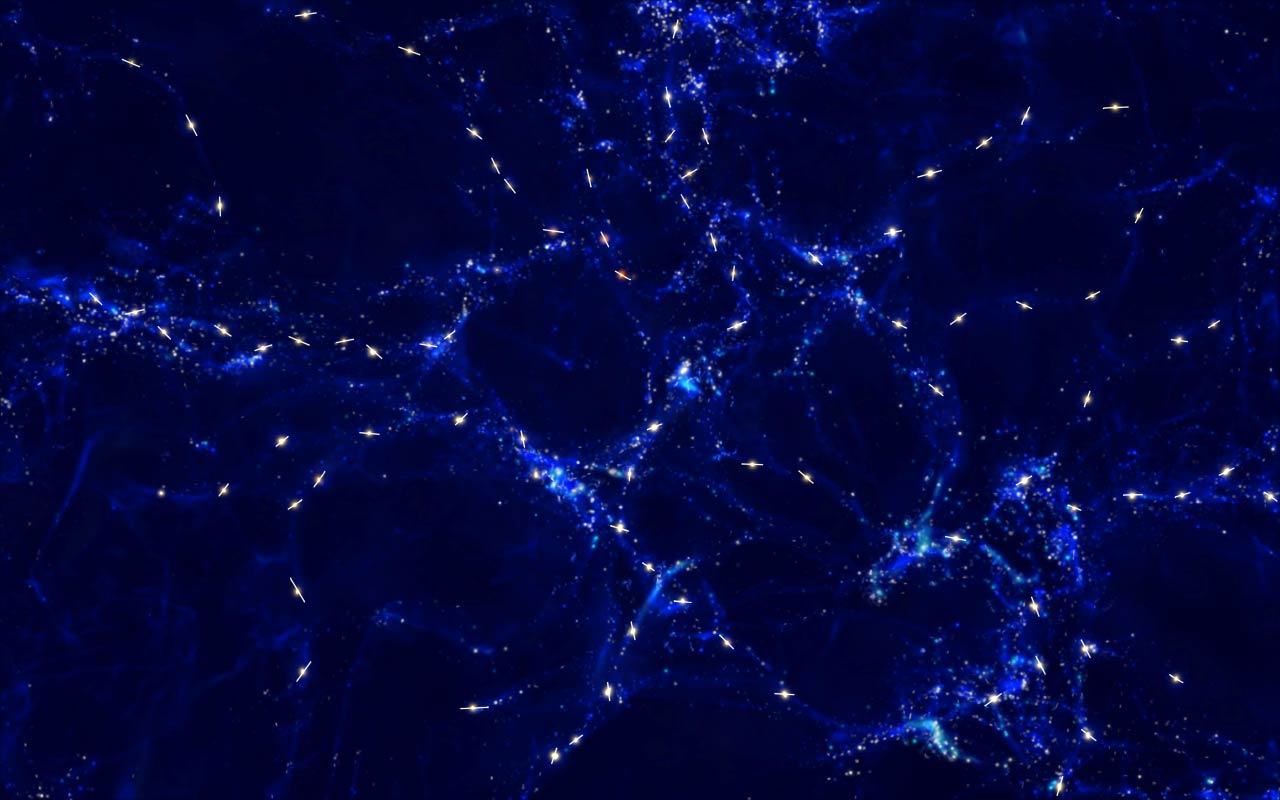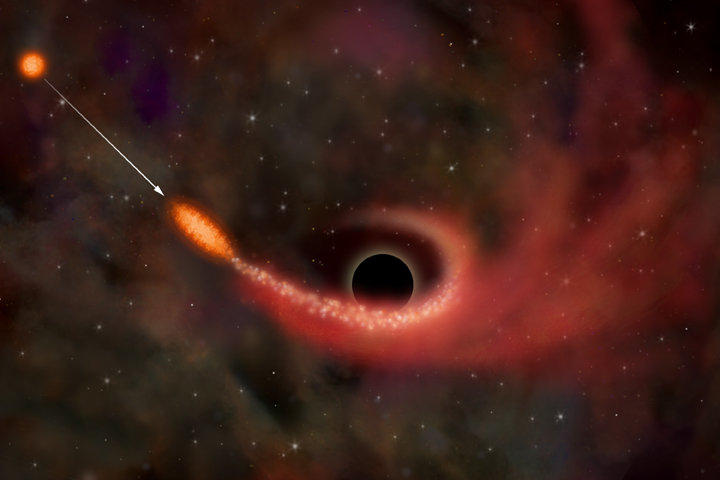
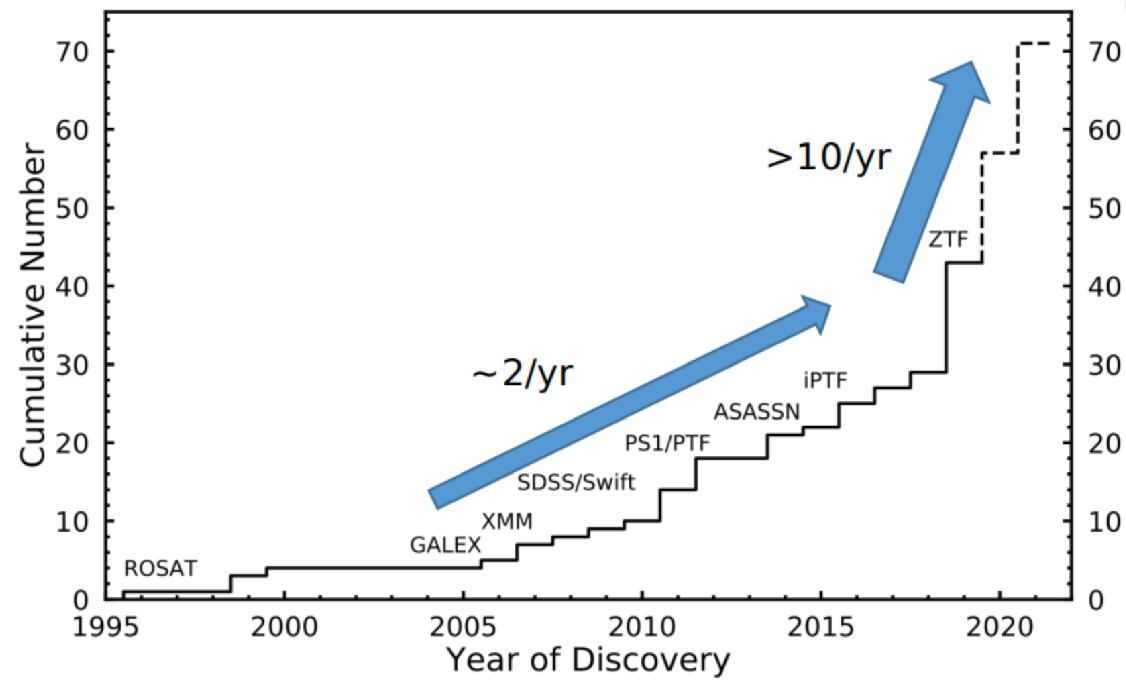
When a star passes within the tidal radius of the supermassive black holes (SMBHs)
in the center of a galaxy,
it will be tidally disrupted and partially accreted, producing a flash of
electromagnetic radiation. The TDE emission peaks in the UV or soft X-rays,
with a characteristic t^(-5/3) decline on timescale of months to years.
The discovery of TDEs has experienced explosive growth recently with the
advent of wide-field optical surveys, such as PanSTARRS, PTF, ASAS-SN and ZTF.
The UV/optical photons from TDEs can be absorbed by dust in the vicinity and re-processed
into the infrared band, giving rise to an mid-infrared (mid-IR) flare,
so-called an IR echo.
We have detected the IR echo of TDE for the first time (Jiang et al. 2016). This work has been press released by NASA featured as Studies Find Echoes of Black Holes Eating Stars. The IR echo is essential to estimate the total energy released by TDEs and can be an efficient method to search for dust obscured TDEs. Moreover, it offer us a unqiue approach to probe the pc-scale dust around SMBHs. See a brief introducation paper on TDEs and their echoes in Physics wtitten by me. Our discovery has been elected as Top 10 Achievements of Chihnese Astronomy in 2016.
A series of works have been continued after our first discovery of IR echo, see publication list below and stay tuned for further adding.
Aiming to unveil the potential dusty TDEs, we have carried out a systematical search of Mid-Infrared Outburst in Nearby Galaxies (MIRONG, which means "puzzling flames" in Chinese). A sizeable candidate sample was selected by us through WISE mid-IR light curves, and multi-wavelength following-up observations are undertaking (e.g., optical spectra, NIR photometry, radio, X-ray).
It's widely believed that supermassive black holes (SMBHs) with masses millions to billions
solar mass are present in most (possibly all) galaxies with massive bulges,
and the BH mass correlates tightly with various classical bulge properties.
These black holes must be grown from much smaller 'seeds'.
Intermediate-mass black holes (IMBHs) in the nearby galaxies,
with masses in the range of one hundred to one million solar mass, provide important clues to
the mass and abundance of these seeds in the early universe.
IMBHs also bridge the gap between SMBHs in the galactic nuclei and stellar
black holes in binaries.
I have led the multiwavelength study of a low-mass (~1.6 million solar mass) BH in nearby dwarf S0 galaxy UM 625 selected by SDSS spectrum (Jiang et al. 2013).
Recently, we have discovered a potential much smaller IMBH candidate in the center of nearby barred bulgeless galaxies NGC 3319 (Jiang et al. 2018, reported by phys.org).
The repeat and time-domain spectral observations have revealed a class of active galactic nuclei (AGNs) which can change their types on time scales of years, characterized by emerged or disappeared broad lines. These objects are called changing-look (CL) AGNs. Follow-up studies of these systems concluded that a dramatic change in the accretion flow, rather than changes in the obscuration, is the most likely explanation of the changes in their spectral appearance. Such rapid state transformation poses serious challenge to the canonical accretion disk theories of SMBHs.
Utilizing the mid-infrared (MIR) light curves, we have successfully diagnosed the nature of 10 CL AGNs, supporting the scheme of dramatic change in the accretion rate (Sheng et al. 2017, introduced by Nature News). We have also conducted the searching for CL AGNs by MIR variability, including turn-off quasars (Sheng et al. 2020) and turn-on AGNs (Yan et al. 2019).
The Wide-field Infrared Survey Explorer launched by NASA has provided us a good opportunity to explore the dynamic IR sky. Examples as below.
Observationally, AGNs are classified into two populations, Type 1 and Type 2, depending on
whether broad emission lines appear in their optical spectra.
The most popular model hypothesizes
that the two types are intrinsically the same, and the observed differences
between the two are attributed solely to orientation effects.
However, evidence has emerged that the simple unified model may not be able
to explain all of the observational facts.
Using low-redshift samples of AGNs, we have found that Type 2 AGNs have significant
more neighbors than Type 1s although they share similar clustering properties on
large scales (Jiang et al. 2016).
Our results suggest that the simple unified model based solely on torus orientation
is not sufficient, but that galaxy interactions in dark matter halos must have played
an important role in the formation of the dust structure that obscures AGNs.
We have also performed some comprehensive studies on individual sources in the MIRONG sample and more in upcoming.
See this page in detail.
Intermediate-mass Black Holes
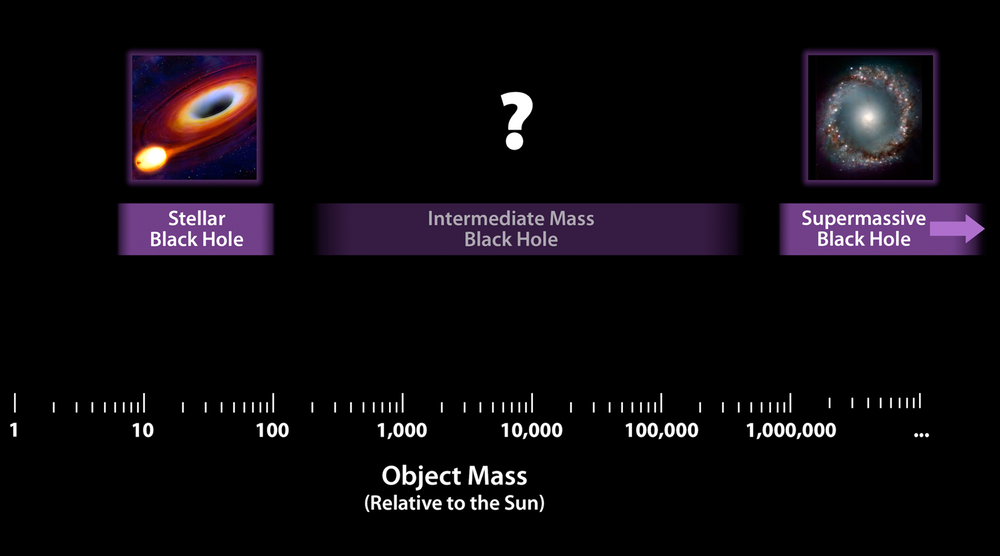
Changing-look AGNs
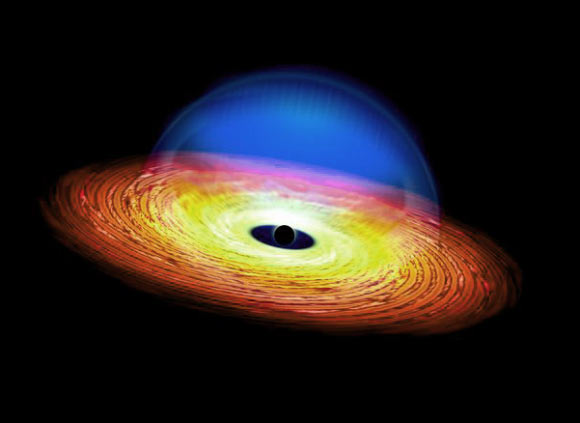
Mid-infrared Dynamical Sky
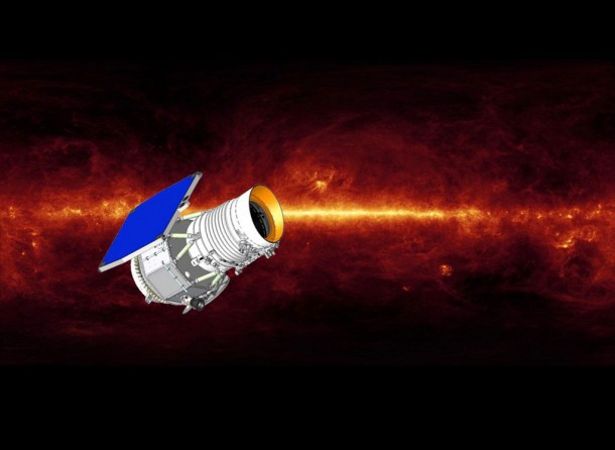
AGN Large-scale structure
